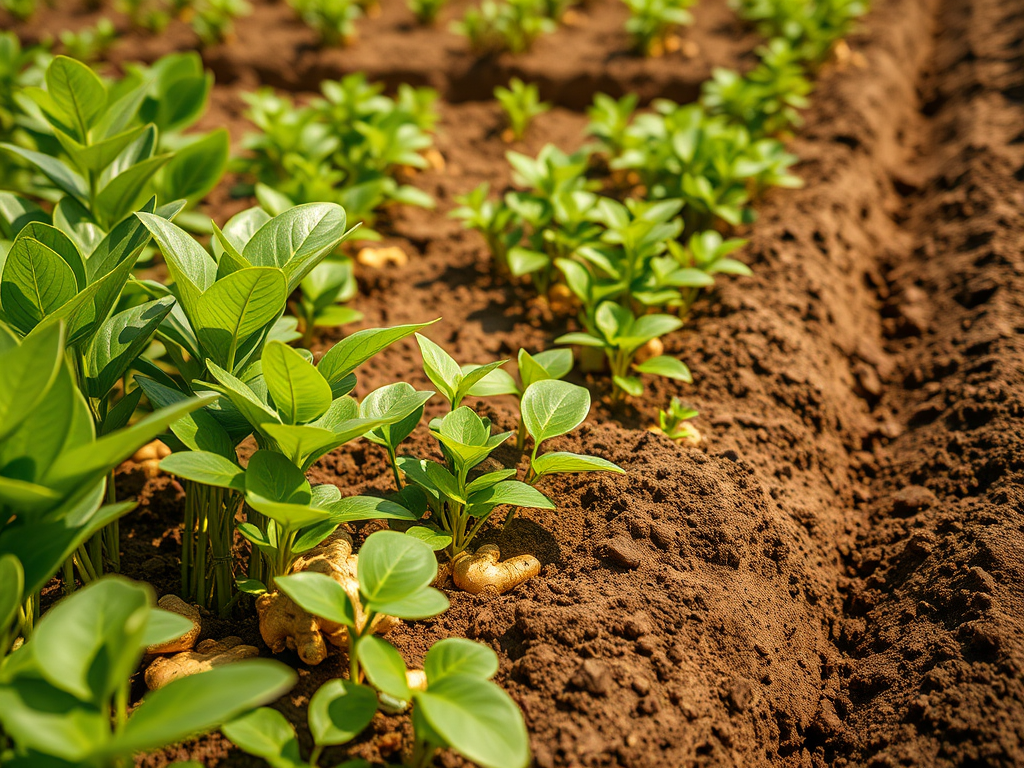Ginger is not just a spice—it’s a goldmine waiting to be fully tapped. Nigeria holds a secret, a golden, pungent secret: ginger. But is its true potential being realized? Beyond a kitchen staple, it’s a multi-billion-dollar opportunity, ripe for the picking. What are the untapped opportunities within its value chain? And how can you, as an investor, leverage this spice for success? Our series of articles unveils the hidden wealth within Nigeria’s ginger value chain, from field to global market. Stay connected here to discover how you can stake your claim.
Ginger (Zingiber officinale) is not only a household spice in Nigeria—it’s a profitable agribusiness commodity with high demand across the globe. From the bustling markets in Lagos to the herbal shelves in Germany, ginger is loved for its health, flavor, and versatility. Nigeria ranks among the top producers of ginger in the world, yet the country still has massive untapped potential in the ginger value chain. This article walks you through everything you need to know to start a successful ginger farm—from land preparation to harvest.
Why Ginger Farming?
Ginger farming presents an opportunity for quick returns, foreign exchange earnings, and entry into the herbal and spice value chain. The crop is known for its:
- Short cultivation period (6–8 months)
- High local and international demand
- Multiple value-added uses (powder, oil, tea, etc.)
- Suitability for organic and sustainable farming
For farmers and agripreneurs looking for a scalable, high-demand crop, ginger is a smart choice.
Ideal Conditions for Ginger Cultivation
To achieve high yield and good-quality rhizomes, certain environmental and soil conditions must be met:
- Location: The best regions include Southern Kaduna, Nasarawa, Benue, Bauchi, and Gombe. These areas offer good rainfall and soil quality.
- Climate: Ginger thrives in tropical climates with annual rainfall between 1,000–1,500 mm and moderate humidity.
- Soil Requirements:
- Well-drained loamy or sandy-loam soil
- Slightly acidic to neutral pH (5.5–6.5)
- Rich in organic matter
If the land retains too much water, the rhizomes can rot. Raised beds or ridges help with drainage.
Step-by-Step Guide to Ginger Farming
1. Land Preparation
Clear the land of weeds, stumps, and stones. Plough the land deeply and create ridges 25–30 cm high. Good tillage helps root penetration and improves drainage.
2. Seed Rhizome Selection
Choose fresh, disease-free, and mature rhizomes. Avoid rhizomes with fungal infections or signs of rot. Each rhizome piece for planting should weigh about 20–25 grams and contain 2–3 healthy buds.
3. Pre-Sprouting
Before planting, ginger rhizomes are often pre-sprouted by storing them in warm, humid conditions to encourage bud development. This helps quick germination and uniform growth.
4. Planting
- Time: April to May (start of rainy season)
- Spacing: 30 cm between rows and 20–25 cm within rows
- Depth: Plant rhizomes 5–7 cm deep with buds facing up
Cover with soil and apply mulch (e.g., dry grass) to retain moisture and suppress weeds.
5. Fertilization
Use well-rotted organic manure like poultry droppings or compost. Apply 10–15 tons per hectare during land prep. Supplement with NPK 15:15:15 fertilizer at 6–8 weeks after planting.
Foliar feeds rich in micronutrients can be applied every 2–3 weeks to boost plant vigor.
6. Weed and Pest Control
- Weeding: Weed manually or use approved herbicides. Mulching also helps reduce weed competition.
- Pests/Diseases: Monitor for soft rot, bacterial wilt, and leaf spot. Use organic treatments like neem extract or copper-based fungicides where needed.
7. Irrigation (Optional)
If farming in dry areas or during the dry season, drip irrigation helps maintain consistent moisture levels, which is crucial during the sprouting and rhizome development stage.
8. Harvesting
Ginger is ready for harvest between 6 to 8 months after planting. When leaves start to yellow and dry, carefully dig up the rhizomes using a hoe or fork.
- Fresh Ginger: Harvest at 6 months
- Dry Ginger: Harvest at 8 months and sun-dry for 2–3 days
After harvesting, cure rhizomes under shade for a few days to toughen the skin, reduce moisture, and prepare them for storage or processing.
Common Mistakes to Avoid
- Late Planting: Reduces yield and increases disease exposure
- Poor Drainage: Causes root rot and yield loss
- Low-Quality Rhizomes: Leads to poor germination
- Ignoring Pest Monitoring: Results in late detection and crop loss
Final Thoughts
Ginger farming in Nigeria is a promising venture that offers real income potential for both smallholder farmers and large-scale investors. With rising global demand and an increasing shift towards natural health products, now is the best time to key into ginger production.
By following the right steps from land preparation to harvest—and avoiding costly mistakes—you can position yourself for a successful ginger agribusiness.


